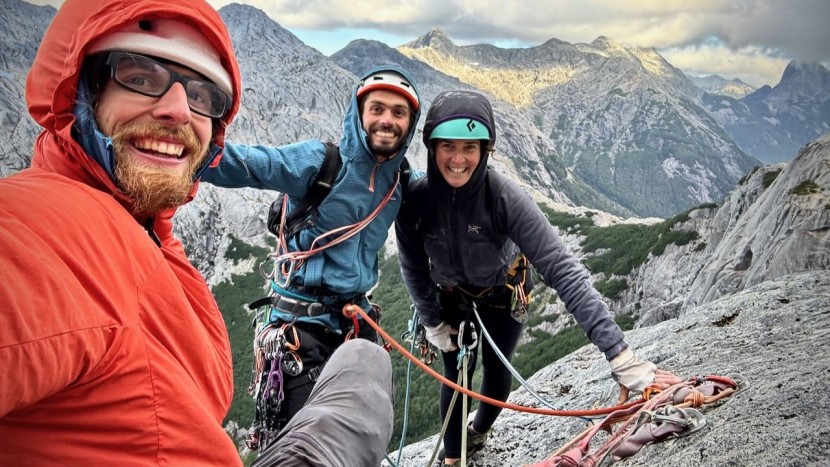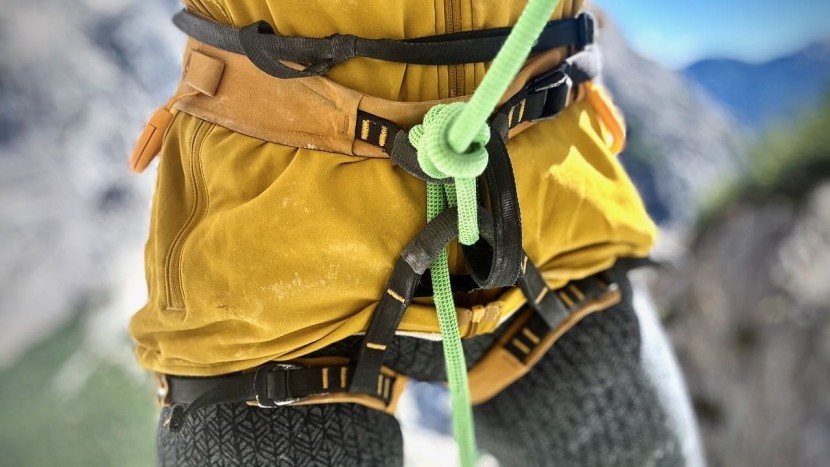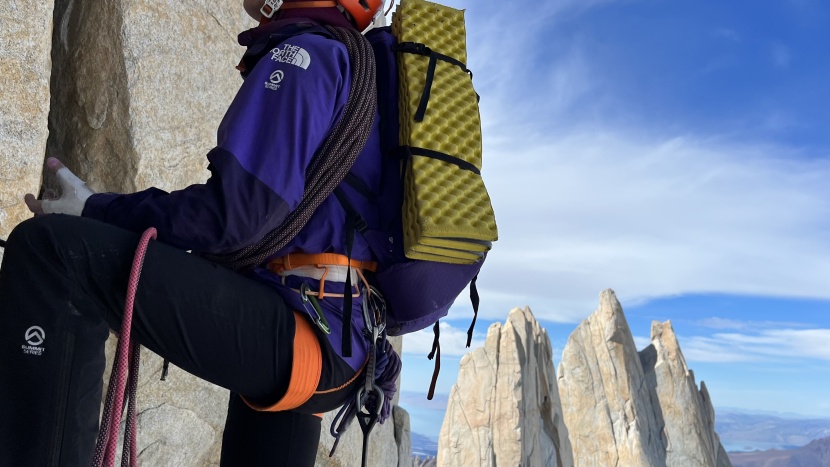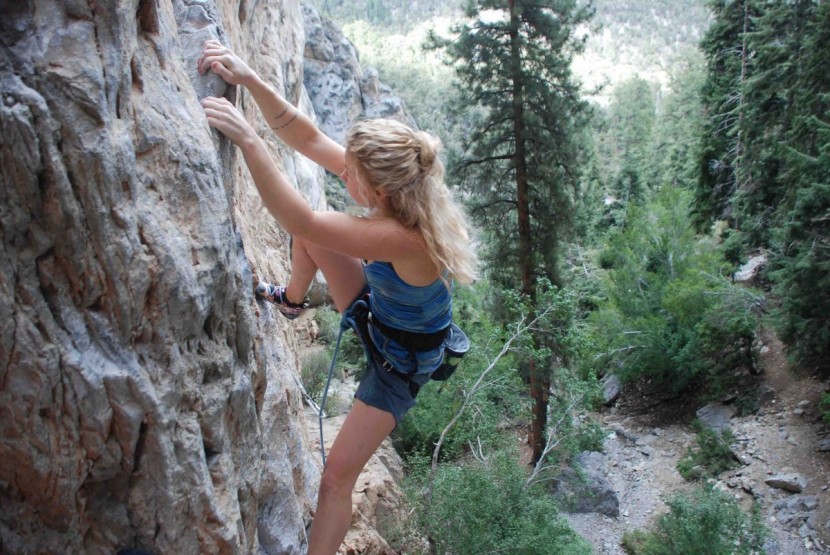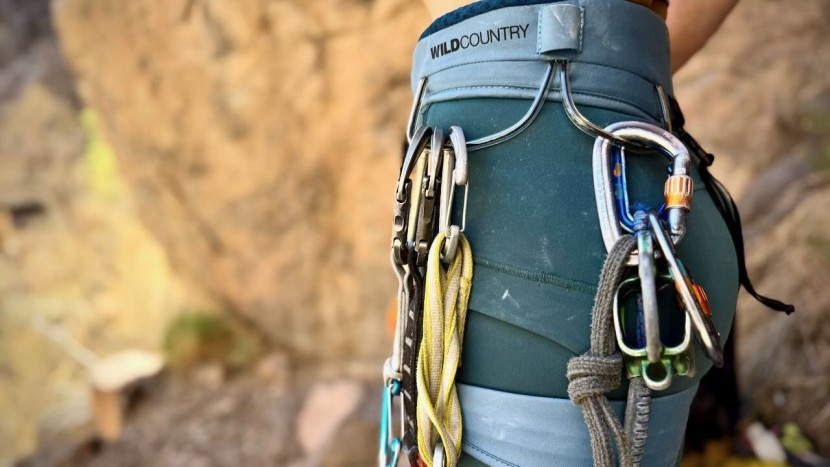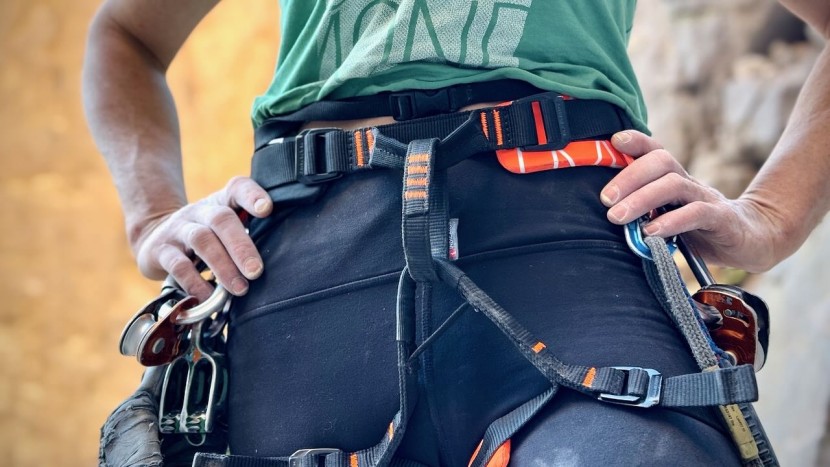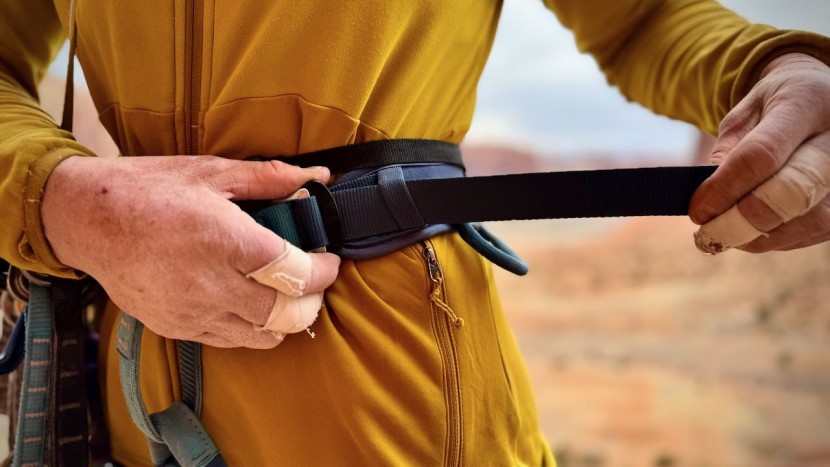We tested each of the climbing harnesses over a four-month period, taking input from several different climbers with decades of experience between them. We wore them while sport and trad climbing at the local crags around Las Vegas, Nevada, and Bishop, California, as well as expedition climbing trips to the southern tip of the globe. Here's how we specifically tested the various metrics that we used to evaluate the different models.
Hanging Comfort
We evaluated hanging comfort through several methods. First of all, we spent a lot of time hanging. We hung out in each harness when working a route, belaying someone who was hangdogging their project, and even while putting up first ascents with several extra pounds of gear hanging from the gear loops. We even set up a free-hanging test in our living room. We clipped ourselves into a secure point in the ceiling and hung out for ten minutes, or longer if we could stand it.
Standing Comfort and Mobility
We wore each harness for at least one full day and paid close attention to how comfortable we felt throughout the day. We considered whether we could easily walk and climb in a certain model, with or without a pack on, whether it pinched us anywhere, whether we felt constrained by it, whether it impeded our movement, or whether we barely noticed that it was on.
Since a large part of the standing comfort is also dictated by the fit of the harness (rise, leg loop circumference), we did a lot of measuring to see what really constitutes a women's specific fit. After measuring as many rises out there as we had friends, we tried to come to a consensus for what fit the majority of women best. We also weighed the harnesses ourselves to see how much a model would weigh you down, whether sitting on your waist or balled up in your pack.
Discipline-Specific Features
If a harness was specifically designed for one type of climbing, we evaluated how well it performed in that specific discipline. Some harnesses are sport-specific models and might not have ice clipper tool slots, but if you are only looking to use it for sport climbing, it would be unfair for us to compare it to an all-around model. For sport harnesses, we mainly considered the placement and ease of access of the gear loops. For all-around harnesses, we considered the gear loops as well, looking to see how much we could carry on them, as well as the number and usability of ice tool clipper slots.
Versatility
We wore these models on steep single-pitch sport routes, long vertical climbs, single-pitch traditional routes, and multi-pitch objectives in the alpine. Then we rated them based on the number of disciplines that they would be useful for. Some harnesses receive a low score for versatility as they work best in the gym and not for much else. In contrast, others have a plethora of features that make them great on any imaginable climb, but they are overkill for those who stick mainly to one particular application, like gym or sport routes.
Adjustability
For this metric, we compared the adjustment options in the waist and leg loops and tried each model on over a variety of clothing and on different ladies. Could we wear this over leggings and thicker pants? When the leg loops were let out larger, were they still comfortable? How was each model sized compared to the other?

